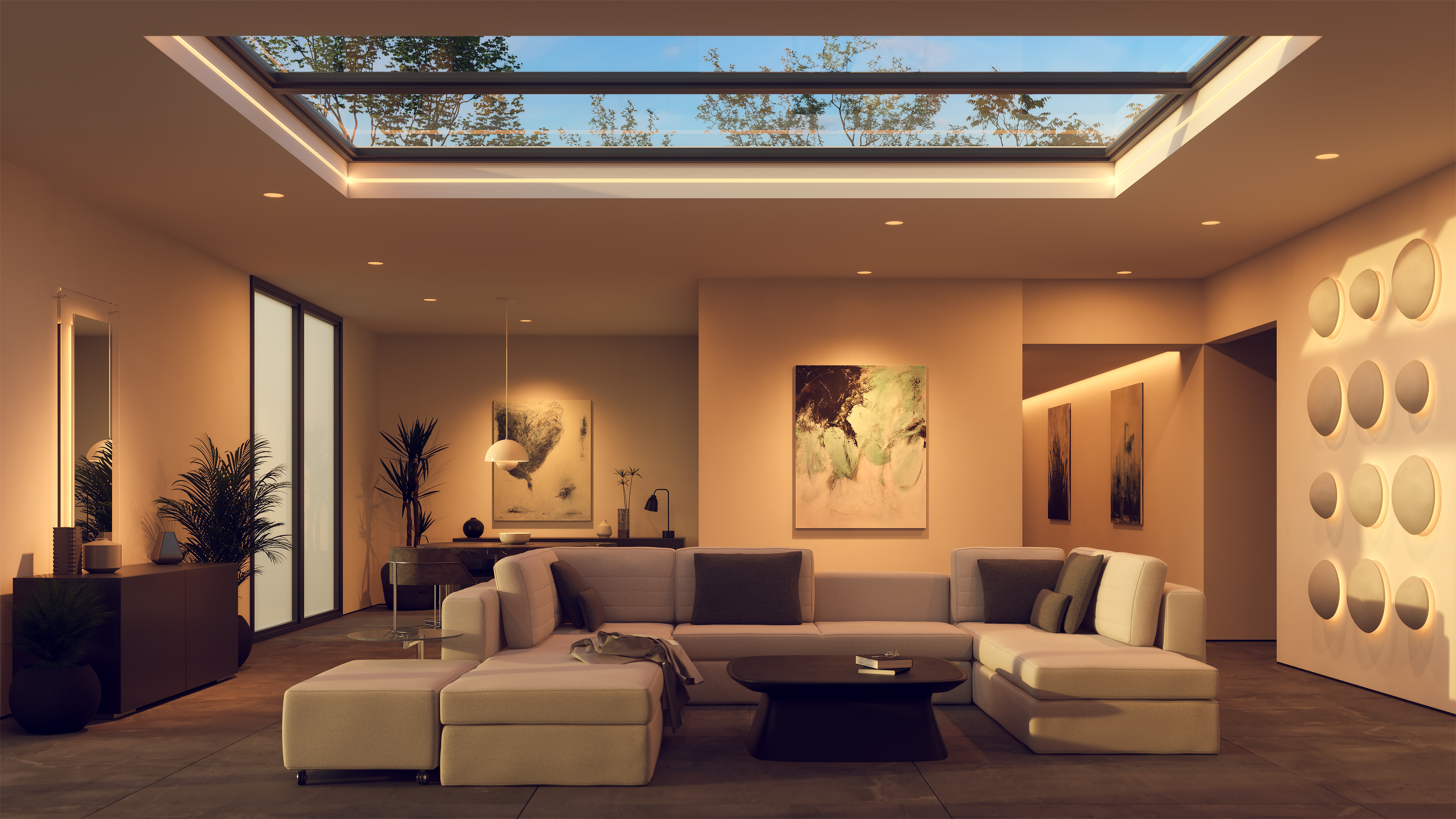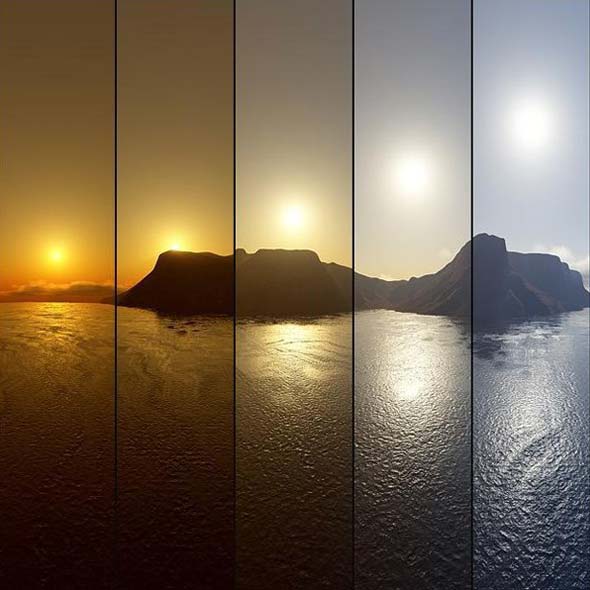June 21, 2018
How to Light a Living Room
While most of our rooms are designed with specific tasks in mind ‒ cooking, dining, bathing, sleeping ‒ the living room hosts a broad range of activities, unique to each person. Depending on the day, it might be where we entertain our friends and family, kick up our feet to relax, curl up with a good book, binge on our favorite shows or even eat the occasional meal. This multi-use space needs carefully planned lighting for everyday living. From spotlighting family photos and artwork on the walls to providing ample light when the kids do their homework, let's explore the many lighting layers that make your living room come to life.

Task Lighting
The first, most important step in lighting a living room is figuring out how you use the space. From reading to relaxing, set up your lighting to help you along the way; this is called task lighting. Take a moment to think about what happens in your living room. For many of us, that’s watching TV. Televisions give off light of their own, so it’s important that your lighting doesn’t conflict with this, causing glare that interferes with your favorite show and hurts your eyes. Glare can come from a variety of lighting sources like table lamps without shades, downlights pointing at the screen, and even windows. Be sure to position your lighting and your TV so no light shines directly toward the screen.
Bias lighting is a clever way to both avoid glare on the TV screen and decrease the eye strain caused by long exposure to TV screens in dark rooms. Bias lighting involves placing lighting behind a television in order to increase the visibility around the screen, without shining more light directly into the viewer’s eyes. This can be done easily with a simple RGBW LED strip, ideally with a warm color temperature of 1000K to 2700K at night and 3000K to 5700K during the day to help maintain your circadian rhythm. This provides more ambient light in the room and saves your eyes from constantly adjusting between a bright screen and the dark room surrounding it. Far from distracting from what’s on the screen, bias lighting actually makes the images on the screen appear richer.
When it comes to reading lights, ambient table and floor lamps don’t provide the focused light you truly need. Desk lamps or floor reading lamps are your best bet ‒ their bright, focused light reduces squinting and eye strain, highlighting the words on the page rather than the space around you. If you’re looking for a more versatile option, consider an adjustable floor lamp like the Berenice Floor Lamp by Luceplan or the Kelvin LED F Floor Lamp by Flos. A simple swing of the arm or pivot of the head can accommodate your reading session, whether you’re sitting up or lying down, and easily shifts for the kids coloring at the kitchen table. If your tasks are relatively stationary, a stylish directional lamp may be more your speed, like the classic Grashoppa by Gubi. In smaller spaces, you may even consider a canopy mounted reading light, such as the Tolomeo Wall Light by Artemide.

Accent Lighting
After selecting lighting for the living room’s main activities, the next step is accent lighting. Accent lighting highlights artwork and architectural features within the space.
If you’re in the midst of building or remodeling, adjustable recessed lighting is a fantastic option. Aim to install your ceiling lights at a 30° angle, about two feet from the wall on an eight-foot ceiling. This positioning and proper beam spread selection will create the perfect spotlight effect. For a vibrant touch, consider the Luca Adjustable Downlights. With TruColor™ technology, these fixtures offer 16 million colors and tunable white light (1500K-6500K), making it easy to showcase your favorite pieces just the way you want.
For a broad wash of light, the Luca Wall Wash and Reveal Wall Wash are both fantastic options. The Luca Wall Wash delivers a clean, elegant effect from the ceiling to floor, while the Reveal Wall Wash provides a continuous run of glare-free illumination that beautifully showcases your artwork without overshadowing your décor.

To highlight a textured wall or one with architectural elements, consider a wall-grazer from PureEdge Lighting’s Cirrus and Stratus families. The shadows and patterns become works of art. “Shadows aren’t always a bad thing,” a Lightology lighting consultant reminds us. “In fact, shadows can be appealing when you want visual drama." Micro Grazers are another great grazing option to emphasize the textures of smaller architectural elements.


If considering a more dynamic approach, track and monorail lighting can be both stylish and practical, especially for high ceilings or rooms that don’t need a remodel. TruTrack® is a modern option that seamlessly provides versatile lighting in just ⅝” drywall. Featuring multiple track head options, magnetic 2-circuit, and continuous runs of illumination effectively highlighting the architecture of your home while providing an ideal balance of direct and ambient lighting.
If using accent lighting on a sculpture, plant, or other three-dimensional focal piece, consider spotlights or uplights, or recessed lights in the floor. Verge from PureEdge Lighting would also work well. As with all recessed lighting, uplights maximize space while providing the perfect layer of lighting. There’s also the three-point lighting technique, which employs a key light, fill light and back light to help illuminate an object while also controlling or eliminating the shadows produced by direct lighting.


Ambient Lighting
Once you’ve figured out your task and accent lighting, the last step is to add some general ambient lighting to fill in the gaps and set the mood. This can be done in a variety of different ways.
Recessed downlights are a great choice, if you’re in a position to install them. Avoid simply covering the ceiling with a collection of recessed downlights in a uniform pattern. “People tend to grid out recessed can layouts, which is not the way you should be thinking about that,” says Greg Kay, award-winning designer and CEO of Lightology & PureEdge Lighting. “Instead, focus on what you want to see, what’s important in your space. Is it a work of art? A texture wall? An architectural feature? A vase on a table? Once you do this, you can fill in the blanks with general downlights or architectural lighting like Truline.”
One exciting alternative to traditional recessed downlighting is linear architectural recessed lighting, such as the TruLine Plaster-In LED Systems. These sleek designs recess into ⅝ inch thick drywall without requiring joist modification, allowing for countless installation options tailored to your space.
In addition to TruLine, consider other inventive recessed systems like TruCirque, a circular lighting system for walls or ceilings; Verge, which elegantly highlights the contours ceilings, walls, and corners where two surfaces meet; Veil, a recessed linear system that provides ambient, indirect lighting for walls or ceilings; and TruCurve and TruQuad, which enable you to shape your design with limitless creativity, empowering you to create unique, personalized spaces that enhance the contemporary look of your living area.
Wall-washers, like the Reveal Family by PureEdge Lighting, generously bathe an entire wall in even lighting without shadows, helping a room feel more spacious.
At this point, only a few pockets of shadows should remain in your living room, and this is where you’ll want to add ambient floor lamps and table lamps, alongside recessed downlights for full illumination. Portable lamps offer localized pools of light at eye level that flatter faces, creating an intimate yet relaxed social atmosphere.
The centerpiece for many living rooms is a pendant or chandelier, and there are plenty of styles to choose from. The iconic PH 5 Pendant from Louis Poulsen and the contemporary Talia Chandelier by Visual Comfort Signature: are just a few top-selling chandeliers that bring personality to your space. Remember that a chandelier’s primary function is to provide style and ambiance, and they’re not always an effective lighting alternative to recessed downlights, track or monorail.

High-Tech Features:
Customized Color & Smart Home Solutions
We’re naturally inclined to respond to the bright blue hues of a morning sky and the warm amber tones of a setting sun—this is part of our circadian rhythm. Today’s lighting technology allows us to align our indoor lighting with these natural patterns, a concept known as Human Centric Lighting. Research shows that lighting significantly impacts our mood and well-being, with brightness, color temperature, and hue all playing important roles.
TrueColor™ RGBTW by PureEdge Lighting is transforming color-changing LED technology. Its 5-channel color mixing provides a wide spectrum of white light from 1500K to 6500K and over 60 million colors all with unparalleled accuracy, delivering a beautiful lighting experience for any space.
Warm Dim and Tunable White technologies further enhance your lighting options. Warm Dim lets LED lights dim to warmer tones, replicating the cozy feel of traditional incandescent bulbs. This technology is gaining popularity among homeowners, especially for creating inviting atmospheres in living rooms.
Tunable White takes it a step further, allowing you to easily adjust brightness, color temperature through an app or wall control. “Tunable White enables users to set the mood for any occasion,” says a Lightology Lighting Consultant. You can choose a warm 2000K for intimate evenings, a lively 3000K for gatherings, or a bright 4000K to energize your mornings.
Smart Controls Made Easy
Smart controls enhance the way you light your living room, offering convenience and flexibility at your fingertips. With just a tap on your smartphone or a voice command, you can easily adjust brightness, color, and even set schedules to match your mood or activity. This technology simplifies your lighting experience, allowing you to dim lights for a cozy atmosphere or brighten them for dynamic tasks.
Advanced Smart Home Solutions
For a comprehensive solution, consider Pure Smart™ by PureEdge Lighting. This system integrates seamlessly into your existing home automation setup, allowing you to control all your lighting from a single app, WiZ Pro. With out of the box color customization, dimming capabilities and a wide range of options, including RGBTW bulbs and architectural lighting, Pure Smart™ elevates your design. Whether you’re remodeling or building from scratch, now is the time to take full control of your living room, one of your home’s central hubs.
Handpicked Living Room Lights
-
What are the benefits of using spotlights in a living room?
-
How can spotlights be used to highlight specific features in a living room?
-
How can I use spotlights to complement other light sources in my living room?
-
What type of spotlights are best for a living room with high ceilings?
-
How can I avoid creating harsh shadows with my spotlights?






















